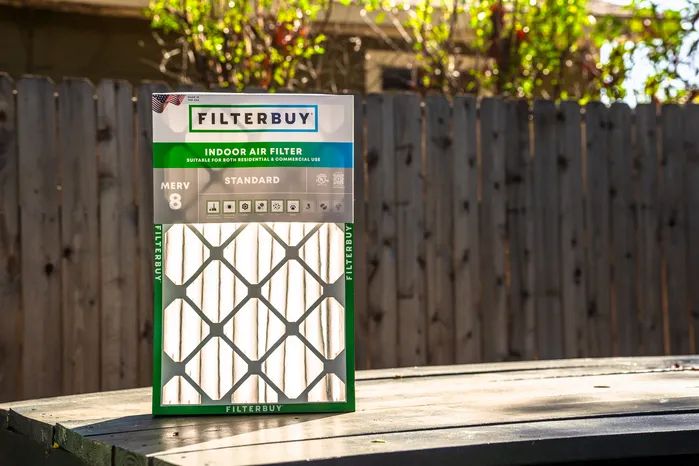The Hidden Cause of Temperature Fluctuations—And How to Fix It
I’ve worked with countless homeowners frustrated by uneven temperatures—hot upstairs, cold downstairs, and constant thermostat adjustments that never seem to work. Most assume the problem is their HVAC system, but in reality, the issue often comes down to two overlooked factors: poor air filtration and inadequate attic insulation.
Through my experience, I’ve seen that a high-quality 16x20x6 Amana HVAC furnace replacement air filter, combined with proper attic insulation, can dramatically improve airflow and temperature consistency. The right filter ensures clean, unrestricted air circulation, while insulation helps maintain steady indoor temperatures, preventing energy loss and system overwork.
This guide will show you how these two simple upgrades work together to enhance comfort, reduce energy waste, and create a balanced home environment. If you’re tired of battling unpredictable temperatures, it’s time to rethink your HVAC approach—starting with your filter and insulation.
Top Takeaways
1️⃣ Uneven temperatures? Poor airflow and insulation—not just your HVAC—are likely the cause.
2️⃣ Upgrade to a MERV 11+ filter for better airflow, cleaner air, and HVAC protection.
3️⃣ Ensure attic insulation is R-38 level to prevent energy loss and stabilize home temperatures.
4️⃣ Replace air filters every 3–6 months to maintain efficiency and air quality.
5️⃣ Filtration + insulation = lower costs, better air, and year-round comfort.
Case Study: How a Simple Filter & Insulation Upgrade Solved Temperature Fluctuations
The Problem: Uneven Temperatures & High Bills
James’ upstairs was too warm, while downstairs stayed cold.
His HVAC ran constantly, but his home never felt comfortable.
Energy bills kept rising with no improvement.
The Cause: Poor Airflow & Insulation
The Solution: Two Simple Upgrades
The Results: Immediate Comfort & Savings
Fix Temperature Issues with Airflow & Insulation
If your HVAC struggles to maintain consistent temperatures, the issue might not be the system—it could be poor airflow and insulation. Upgrading your filter and attic insulation can improve comfort, reduce costs, and extend your HVAC’s lifespan.

"Many homeowners struggle with temperature inconsistencies and rising energy costs, assuming their HVAC system is the problem. But in my experience, the real culprits are often poor attic insulation and low-quality air filters. Research confirms what I’ve seen firsthand—proper insulation can cut heating and cooling costs by 15%, while high-efficiency filters improve airflow and indoor air quality. Upgrading these two elements isn’t just about comfort—it’s a smart investment that enhances efficiency, protects your HVAC system, and creates a healthier living environment."
Supporting Statistics: Why Air Filters & Attic Insulation Matter
Upgrading insulation and air filters improves home comfort, reduces energy costs, and enhances air quality. Here’s what the research confirms:
1. Attic Insulation = Lower Energy Bills
Save 15% on heating & cooling costs with proper insulation (energystar.gov).
Poor insulation lets heat escape in winter & enter in summer, overworking your HVAC.
R-38 insulation (10–14 inches) is recommended for max efficiency (energystar.gov).
2. High-Efficiency Filters = Better Air & HVAC Performance
MERV 13+ filters trap dust, pollen, mold spores & some bacteria/viruses (epa.gov).
Improved filtration reduces allergens & respiratory issues indoors.
Better filters protect your HVAC system, extending its lifespan & reducing strain.
Key Thoughts: Small Upgrades, Big Results
Next Steps: Upgrade Your Comfort & Efficiency
Follow these simple steps to fix temperature fluctuations, improve airflow, and cut energy costs.
1. Check Your Air Filter
Locate your 16x20x6 HVAC filter.
If it’s clogged or dusty, replace it.
Upgrade to a MERV 11+ filter for better air quality.
2. Inspect Your Attic Insulation
Look for thin or damaged insulation.
Ensure at least R-38 insulation (10–14 inches, depending on type).
Add more insulation if needed.
3. Buy High-Quality Products
4. Maintain & Replace Regularly
Change air filters every 3–6 months.
Monitor attic insulation yearly for signs of damage.
Keep extra filters and insulation on hand.
5. Track Your Results
Look for more stable temperatures & better air quality.
Check lower energy bills & improved HVAC performance.
If issues continue, schedule an HVAC inspection.
Start Today for a More Comfortable Home!
A better filter and proper insulation = lower costs, cleaner air, and year-round comfort. Make the upgrade now!
Frequently Asked Questions
What happens if you put the furnace filter in the wrong way?
Installing a filter backwards can reduce its effectiveness and strain the HVAC system by restricting airflow.
How can I tell the correct air size filter for my furnace?
The correct size is usually printed on the side of the current filter or specified in the furnace manual.
How do I know which furnace filter to buy?
Determine the size and MERV rating from your current filter or furnace manual, and choose a filter that meets those specifications.
Can a high MERV filter damage my furnace?
A high MERV filter can restrict airflow if the furnace is not designed to handle it, potentially causing the furnace to work harder and leading to overheating or damage over time.
What are the symptoms of a dirty furnace filter?
A dirty furnace filter can cause symptoms such as reduced airflow, increased energy bills, poor indoor air quality, and the furnace overheating or shutting down frequently.
Learn more about HVAC Care from one of our HVAC solutions branches…
Filterbuy HVAC Solutions - Weston FL
2573 Mayfair Lane Weston FL 33327
(754) 296-3528
https://maps.app.goo.gl/E3tjmKf5VSWYghGc7


